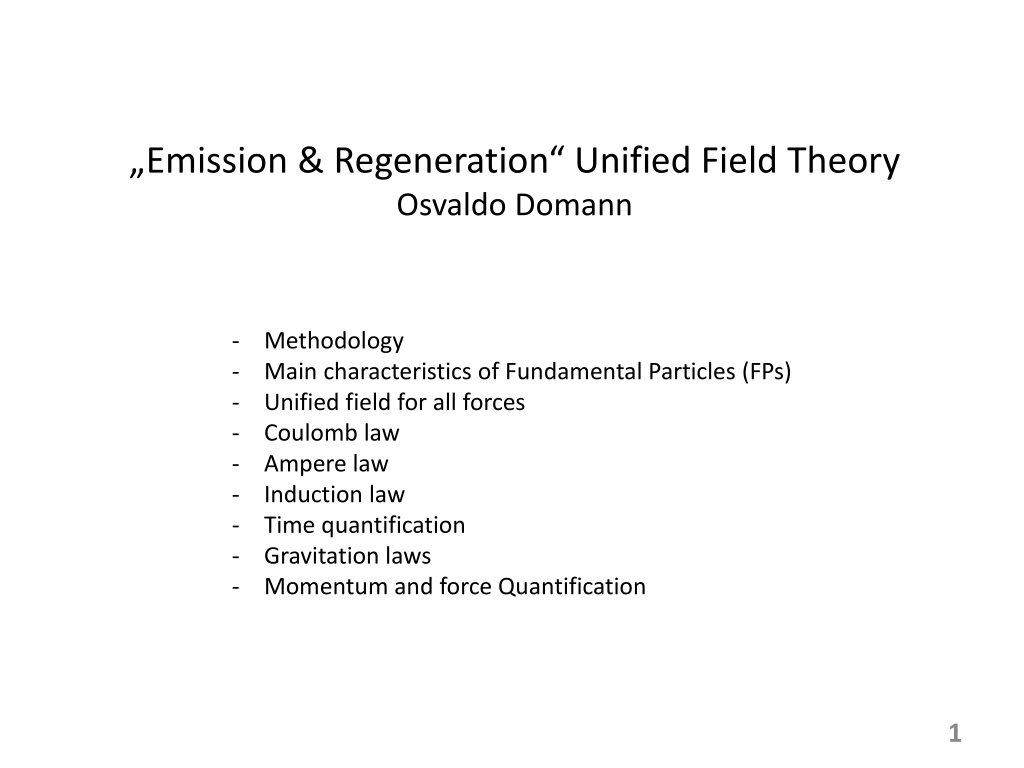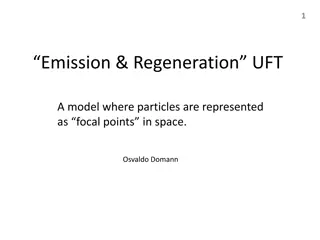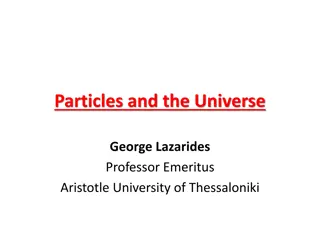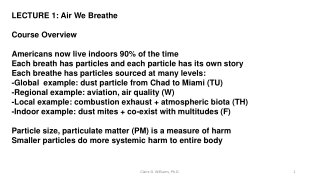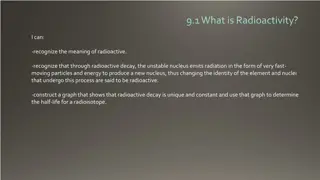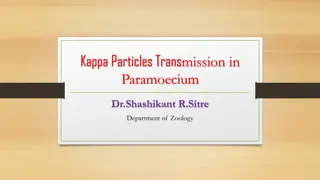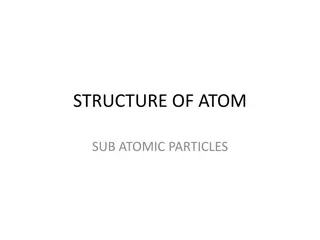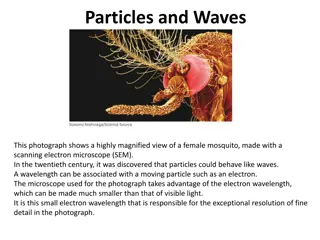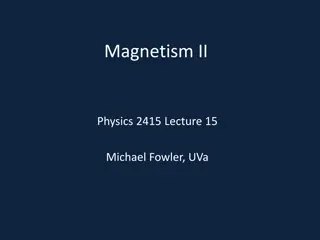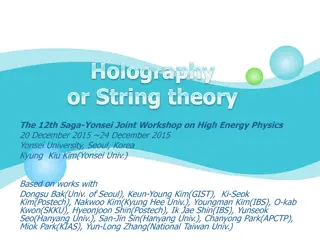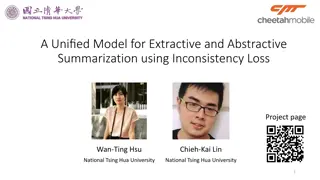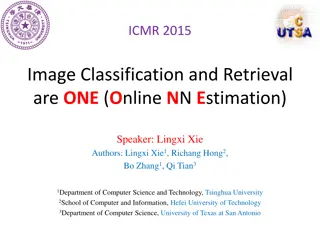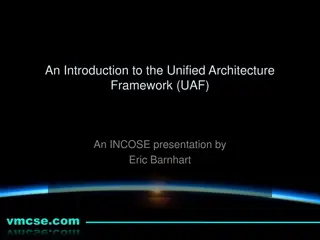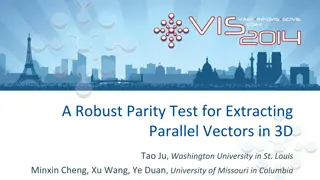Unified Field Theory of Fundamental Particles by Osvaldo Domann
Methodology, characteristics, and interactions of Fundamental Particles (FPs) in the Unified Field Theory proposed by Osvaldo Domann are explored. The theory covers the unified field for all forces, quantum laws, momentum quantification, and more. It introduces the concept of Fundamental Particles moving at light speed and interacting through angular momenta or field magnitudes, leading to the classification of Subatomic Particles and neutrinos.
Download Presentation

Please find below an Image/Link to download the presentation.
The content on the website is provided AS IS for your information and personal use only. It may not be sold, licensed, or shared on other websites without obtaining consent from the author. Download presentation by click this link. If you encounter any issues during the download, it is possible that the publisher has removed the file from their server.
E N D
Presentation Transcript
Emission & Regeneration Unified Field Theory Osvaldo Domann - - - - - - - - - Methodology Main characteristics of Fundamental Particles (FPs) Unified field for all forces Coulomb law Ampere law Induction law Time quantification Gravitation laws Momentum and force Quantification 1
Methodology Postulated 2
Particle representation transversa longitudin l al p p 3
Introduction Distribution in space of the relativistic energy of a BSP with v c + = + 2 o 2 p = E E E E E where e s n 2 p + E 2 o + E = = E E s n 2 o 2 p 2 o 2 p E E E E 1 r d d d = sin o dr 2 2 2 r = = dE E d J e e e = = dE E d J s s s = = dE E d J p n n n d dV=r2 dr sin d 2 4
Introduction Linear momentum out of opposed angular momentum = d E J n n J n 1 = dE d E l d n p 2 R d p 1 n J = d p dE ps p c 5
Introduction Moving particles with their angular momenta p p 6
Introduction Definition of field magnitudes dH = = d H H d s with H E Longitudinal emitted field e e e e e d H =H d s with H = E Longitudinal regenerating field s s s s d H =H d n with H = E Transversal regenerating field n n n n Relation between the angular momentum J and the dH Field dH s = J d s e e e e dH s = J d s s s dH n = J d n n n 7
Characteristics of the introduced fundamental particles (FPs) Fundamental Particles are postulated. FPs move with light speed relative to the focal point. FPs store energy as rotations in moving and transversal directions FPs interact through their angular momenta or dH fields. Pairs of FPs with opposed transversal angular momenta generate linear momenta on subatomic particles. Classification of Subatomic Particles and the neutrinos Basic Subatomic Particles (BSPs) are the positrons, the electrons the proton, the neutron, nuclei of atoms and the photons. Complex Subatomic Particles (CSPs) are composed of BSPs and are 8
Index Interaction laws between two BSPs (electrons and positrons) 1) Interaction between two static BSPs (Coulomb) 2) Interaction between two moving BSPs (Ampere, Lorentz, Bragg) 3) Interaction between a moving and a static BSP ( Maxwell, Gravitation) These three interactions between BSPs correspond to the three following interactions between the longitudinal and transversal dH fields of the Interacting BSPs. s s = dE dH dH 1) Longitudinal X longitudinal (Coulomb) 1 2 p s s 1 2 = dE dH n dH n 2) Transversal X transversal (Ampere) 1 2 p n n 1 2 = dE dH dH 3) Transversal X longitudinal (Induction) p n s p The three following slides show each interaction in detail. 9
Coulomb law 1) Interaction law between two static BSPs (Coulomb) dH s = J d s dE = dH s dH s 1 2 p e s 1 2 r r e s 1 = dp dE p c ( ) l d s s 1 e s = 1 2 dp s H d H d s stat R e r s r R 2 c R 1 1 2 2 R r r 1 2 10
Ampere law 2) Interaction law between two moving BSPs (Ampere, Lorentz and Bragg) ( ) n = dE dH n dH n with 1 1 2 n n 1 2 = dH n J d n in i in in i i 1 ( ) l d n n = 1 2 dp s H d H d s dyn R n r n r R 2 c R 1 1 2 2 R r r 1 2 11
Induction law 3) Interaction law between a moving and a static BSP (Maxwell, Gravitation) Induction law 1 l d 2 n ( ) n = dp s H d H d s ind R n rr s r R c R p p R rr r p 12
Quantification Time quantification dE dp 1 p = = = F dH s dH s Proposed approach 1 2 dt c dt c dt 1 2 1 Q Q 2 I I o 1 2 1 2 F = Coulomb F = Ampere Standard theory stat dyn 4 d 2 d o s io= 4 r radius of focal poin t = = 5.4271 10 t K r r K o o 2 m 1 2 The radius of focal points of BSPs. c = = + 2 2 = E for v c and = r with E E E for v c o o p E 13
Coulomb Linear momentum as a function of the distance between static BSPs stat p 0 0.1 1.8 2.1 518 = 0 p stat pstat pstat 2 0.1 1.8 2.1 d constant 1 1 d pstat d pstat 518 2 14
Ampere law Diffraction of BSPs at a Crystal due to reitegration of BSPs 15
Induction gravitation law Gravitation between two neutrons due to aligned reintegration of BSPs M M = 1 d 2 FG G 2 At stable nuclei migrated BSPs that interact with BSPs of same charge do not get the necessary energy to cross the potential barrier. At unstable nuclei some of the migrated BSPs that interact with BSPs of same charge get the necessary energy to cross the potential barrier. 16
Ampere gravitation law Gravitation between two neutrons due to parallel reintegration of BSPs R 27 2 = 6.05 10 / = R Nm kg FR M M 1 2 d 17
Induction +Ampere gravitation laws Total gravitation force due to the reintegration of BSPs G R = + + F F F = M M T G R 1 2 2 d d 18
Quantification of momenta and forces 2373 . 1 = 20 1 10 s = = o F N p p = 3 1 2 p 2.0309 10 kgms i i o elem i elem elem ----------------------------------------------------------------------------------------------------- 2 a r = o Coulomb = 2.0887 C o 2 4 k d Coulomb 2 b r I I Ampere = = o m1 m2 5.8731 l A o Ampere 2 2 64 k m c d 1 M M Induction = 2.4662 = 2 G 2 1 2 r G o 0 Induction 2 4 d h M M h = = Planck con stant 2 R 1 2 R o 2 k m c d ----------------------------------------------------------------------------------------------------- = b = 2 = 2 a 8.774 10 0.25 k 7.4315 10 ----------------------------------------------------------------------------------------------------- 19
Findings of the proposed approach - Probability and quantification are inherent to the model - All forces are generated by only one field - The generation mechanism of forces out of the dH field is defined - The origin of the charge of a particle is defined - The inertia of particles with rest mass is explained - No strong force is required to explain coexistence of charged particles - No weak force is required to explain radioactivity - No dark matter is required to explain flattening of galaxie s speed curve. - No dark energy is required to explain accelerated expansion - etc. 20
The complete work is available at www.odomann.com Thank you for your attention, Osvaldo Domann odomann@yahoo.com 21
